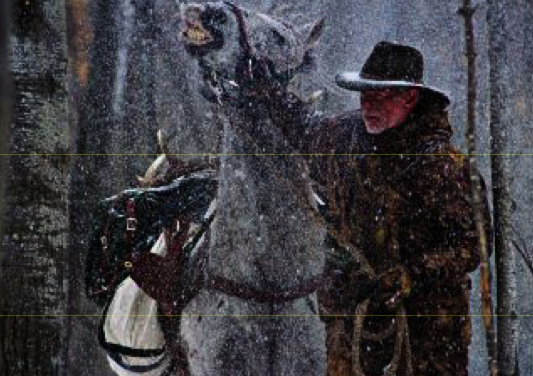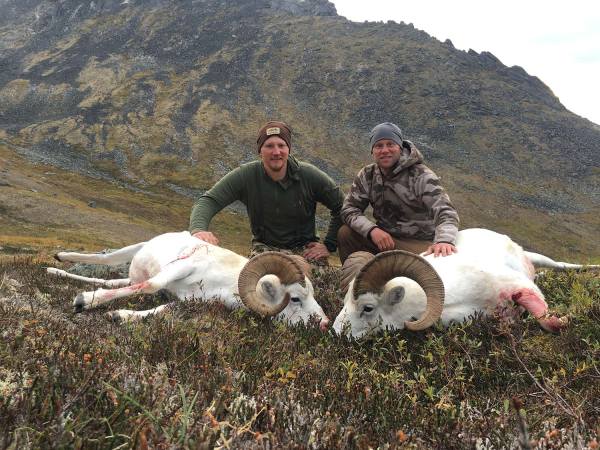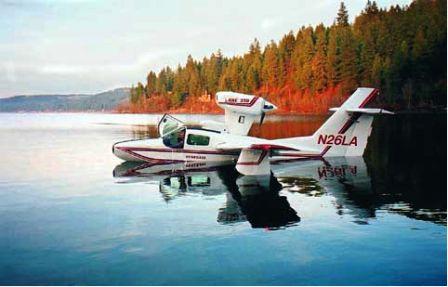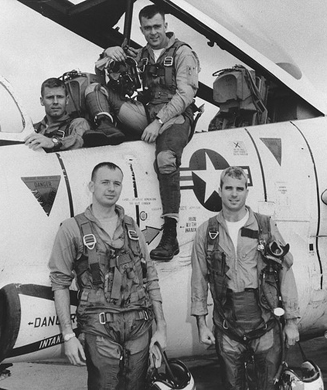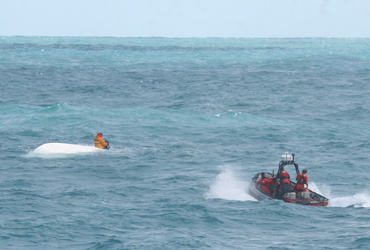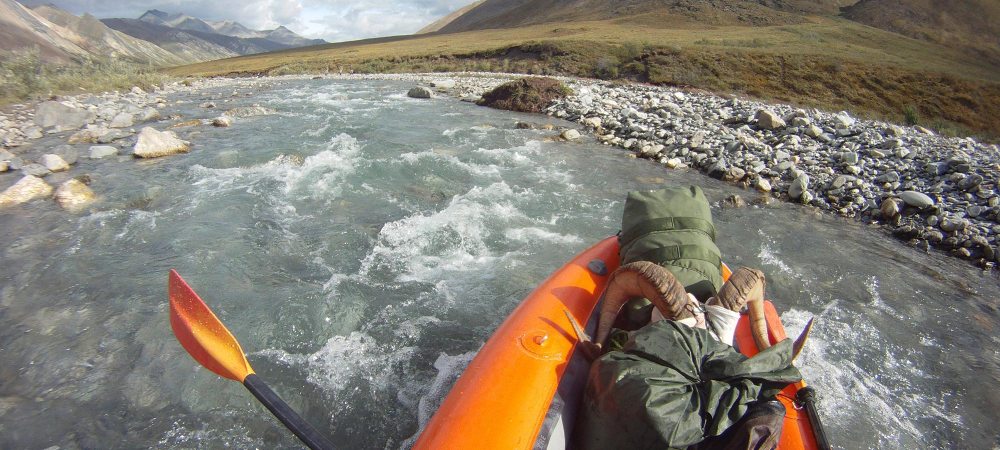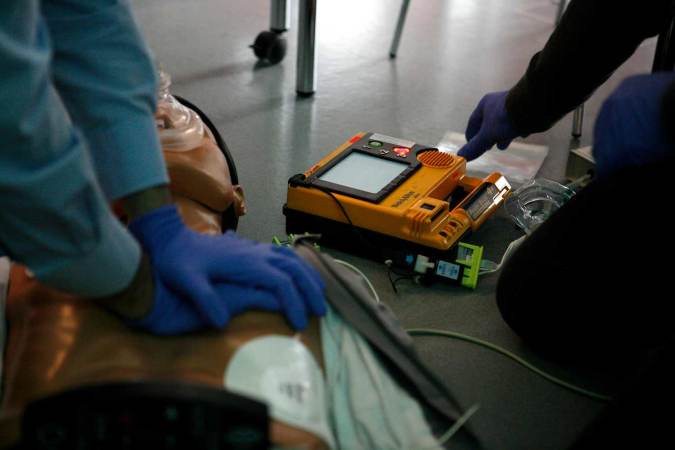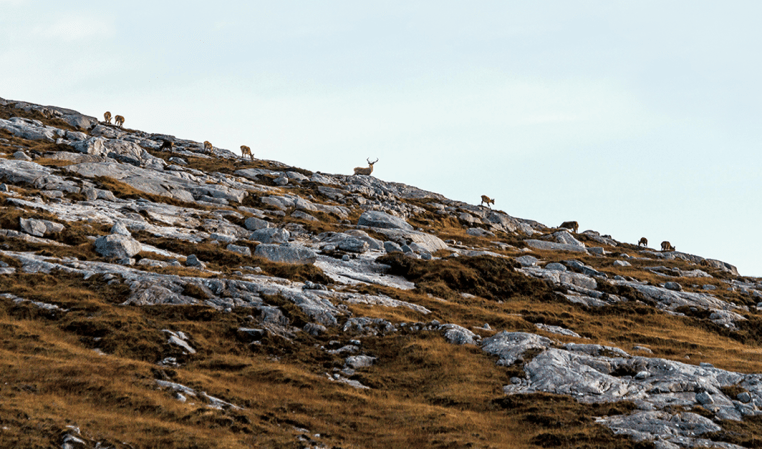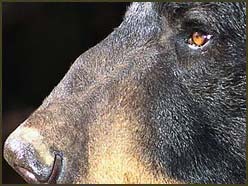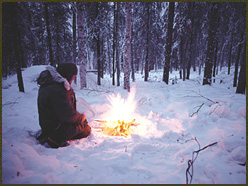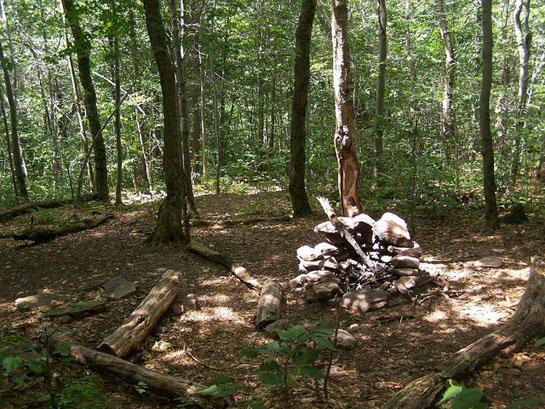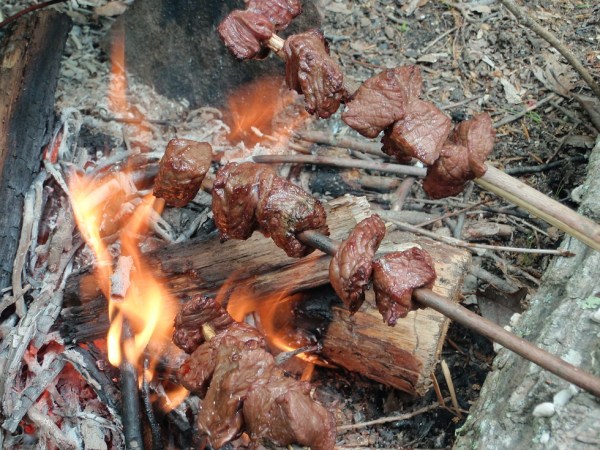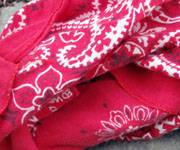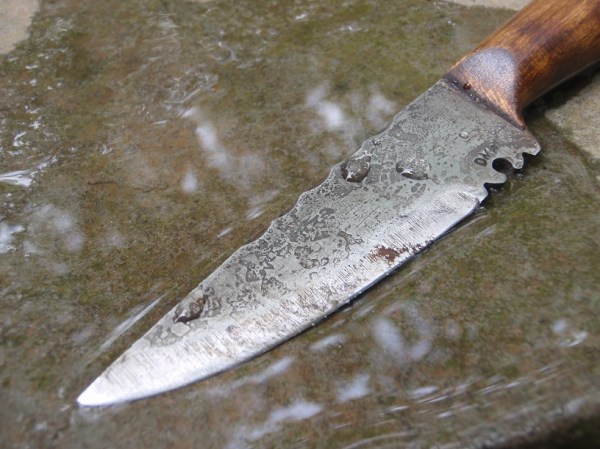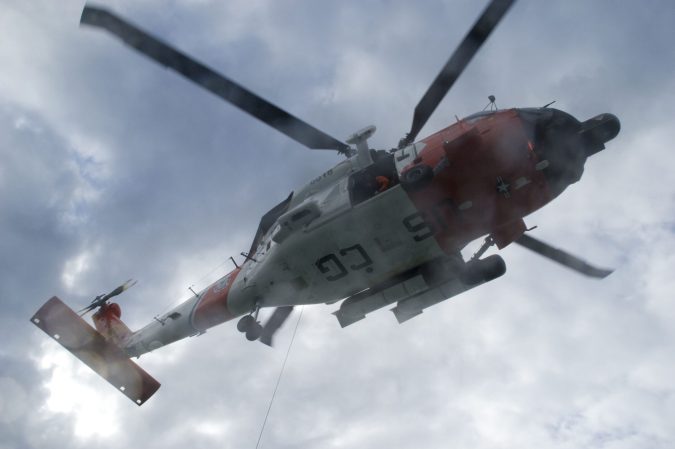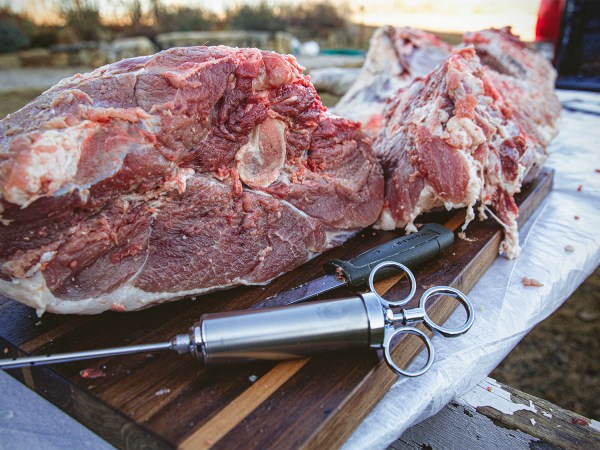Search-and-rescue people are like cops or lawyers: If you’re talking to one, chances are something’s wrong or will be soon. So my meeting Earl Gibbs in the Durango airport was probably some sort of an omen. Next time I’ll pay closer attention.
Twice each fall, my friends and I hunt the Weminuche Wilderness Area above Pagosa Springs, Colo.,elk during the bow season, then mule deer during the rifle season in October. In September I’d seen a monster muley buck above our bowhunting camp; now I was back hoping to claim it.
My buddies Kevin Hammer and Sam Reynolds had driven out ahead of me from Illinois with my string of horses and mules. In Durango, they picked up Pat Busch and Jeff Stelle, two more friends from home, and the whole crew had packed into our camp on Wednesday, Oct. 12, 1994.
I flew to Durango after my last shift as an emergency room doctor in Danville, Ill., but I had no way to get the remaining 60 miles to Pagosa Springs. I was trying to bum a ride when I met Earl Gibbs.
Gibbs is a deputy sheriff for Archuleta County. He also happens to be the director of the Upper San Juan Search and Rescue Team for the Pagosa Springs area. Gibbs has seen a lot of bad planning, a lot of misfortune. He offered me a lift.
“By the way,” Gibbs said as we reached Pagosa Springs, “they’re predicting a hell of a storm, as much as 15 inches where you guys are headed.”
I laughed. “Thanks, Earl. I think we’ll survive.”
By 5:30 Thursday afternoon, I was in the saddle. I’d been up in the Weminuche some 17 times, so riding at night didn’t worry me. The trail runs up through 10 miles of steep basalt canyon to Turkey Creek Lake, then another five before reaching camp on the subalpine tundra at 11,700 feet. The scenery along the way is all slides, switchbacks and vicious cliffs. Beautiful country. Until it turns on you.
The night was clear and moonlit and I made Turkey Creek Lake by 9 o’clock. As I headed up to the pass above the lake, I heard someone riding down toward me.
I thought at first it was one of my buddies, but then I recognized the other rider as one of the Oklahomans who hunt out of a camp near ours. “We’re leaving,” he said. “There’s a storm coming. Fifteen inches of snow.”
I told him that a little snow wasn’t going to scare me off and I kept riding. When I finally crawled into my sleeping bag, I’d been awake for 40 hours.
We were actually pleased the next morning to find that a little tracking snow had come down. By that night, though –the eve of opening day –our tracking snow was a foot deep. We’d seen snow up there in years past. Our gear was solid and we had plenty of wood and food. In fact, Sam, Kevin and I got up Saturday morning intending to put in a full day of hunting. But after slogging about a mile and a half in knee-deep powder, we began to think again.
As far as we knew, there was only one other camp above Turkey Creek Lake, about a quarter mile below ours, with a couple of guys from Chillicothe, Mo. After we aborted our hunt, we stopped by and found the two Missourians, Ernie and Orland, holed up and waiting for the storm to quit. Over tea, they said that they’d heard several shots earlier in the day. We’d heard them too, but hadn’t given them much thought. Now, it turned out, no one could account for them.
And still it snowed. We took shifts for the rest of the day and through the night, knocking the buildup off our tents to keep them from collapsing under the weight of the snow. On Sunday morning, Sam and I saddled two of the horses to see how far we could ride. The snow was up to the horses’ chests. I hadn’t gone 200 yards before I nearly lost my mount in a covered ravine.
The mood around camp began to go a little sour. We were getting bored and edgy, so when Sam spotted a 6-by-6 elk plowing along a ridge above camp that afternoon, everyone ran for a rifle. Kevin got the first shot and made the most of it.
Back at camp, after dressing out the bull, a couple of the guys noted that they’d heard more distant shots. We didn’t know what to make of it; we thought we were the only ones crazy enough to hunt in deep snow. It had taken us an hour just to get to Kevin’s elk; we didn’t have the stamina to investigate those shots any time soon.
The snow continued all Monday, the fourth straight day, but the next morning we finally saw the sun. Pat and I were waiting around camp after breakfast while Kevin, Sam and Jeff went to quarter and pack-out the elk. Suddenly I decided that I had to leave. We were holding up fine, but our feed grain was about gone and the horses were having a hard time pawing down through the snow. I figured that I would walk out and send back a helicopter with feed and help.
Pat did his best to get me to stay. “Don’t worry about it,” I said. “Once I’ve dropped down a thousand feet or so, I’ll be through the deep stuff. I’ll be out in five or six hours. Trust me.”
It was one of those pivotal moments, an epic delusion. Better for me had Pat lashed me to a tree.
I pulled on layers of polypropylene and wool, a Gore-Tex rainsuit, Sorel pac boots, fleece gloves, and a doubleknit stocking cap. I had a knife, a multi-tool, 40 matches, a lighter, and my wallet. As I was about to leave, Pat handed me a survival tool with a compass, mirror, whistle and more matches in a waterproof case. I stuck four of my wife’s homemade caramels in my pocket for snacks and left the tent at about 9:30 a.m.
Even if I’d found it, the trail I’d ridden up five days before would have been suicide by then. Immense cornices of snow were waiting to avalanche, and I knew the pass above Turkey Creek Lake would be impossible. I decided to follow Rainbow Creek down to where it flows into the West Fork of the San Juan River. There, I could pick up a marked pack trail to the trailhead. It was a 16- to 18-mile journey, but all downhill. The deep snow would thin out soon. I’d be in town by nightfall.
The powder in the meadow below camp was waist-deep, so I headed for the spruce and Douglas firs half a mile away. I tried to cheat the snow by walking the creek ice, but I kept breaking through. My boots got soaked.
It took me nearly an hour and a half to reach the timber, and the snow there was just as deep as it was in the meadow. Only now there was a latticework of fallen trees beneath it. I tried the creek bottom again but it was a maze of slick boulders and still more windfalls. Slow going. Much too slow.
At 1 o’clock that afternoon, I tried to build a fire to warm my toes. I couldn’t do it, so I gave my feet a few minutes in the sun and continued. At 3:30, the snow was still up to my thighs. I should have turned back right then, but I kept on.
At 5 p.m., my toes were so numb I had to stop. I’m a physician, after all; I know what hypothermia looks and feels like. And how efficiently it can kill. At this point, it would have taken me three times as long to get back to camp as it had taken me to get this far.
I gathered some squaw wood and tinder but couldn’t get my lighter to work. I tried the matches, but they were damp. I went through every last one of them without a flame.
By now, the sun had dropped below the ridge and I was shaking with cold. I felt a flush of panic. The matches in Pat’s survival kit were my last hope. They worked, but the tinder I had scraped together wouldn’t catch. Soon I had only eight matches left. I added the burned-out matches to the kindling and tried again, to no avail.
Self-hatred skittered around my head: I began talking out loud, cursing myself for leaving camp. I wasn’t afraid of dying so much as I was frustrated –frustrated that I would never see my wife again, and that I hadn’t spent more time with my mother.
It was my hunting license that saved my life. By lighting the wax sleeve it came in, the license itself and the conservation certificate, I got the tinder to burn. I began breathing again.
I spent all night drying my clothes and boots in the lee of a wall built from compressed snow. I also dried every piece of paper in my wallet.
I ate my last caramel at about 8 o’clock Wednesday morning. At 2:15 that afternoon, I reached the West Fork of the San Juan, and made it to the trailhead at about sundown. Within a mile I was crawling into the cab of a pickup‚ just as a helicopter cut across the tree line.
I knew in my bones that somebody was looking for me, so I called Earl Gibbs as soon as I got to town. I was right: A search-and-rescue helicopter had spotted our camp earlier that day and Pat and the pilot had been flying the West Fork, trying to find me. Meanwhile, Sam, Kevin and Jeff were waiting at camp; they would be flown out the next morning.
But my relief turned to horror when Earl told me that Ernie and Orland, the Missouri boys, had left camp earlier in the day, following my trail. I knew that they couldn’t make it out leading a horse and four mules.
The next morning, we made several passes over my trail but failed to locate the Missourians. We dropped some alfalfa cubes for our stock and hauled out Kevin, Sam and Jeff.
But Ernie and Orland had demonstrated more sense than me. They had given up about a mile down my trail, spent a cold, wet night on the mountain, and turned back to camp. They were evacuated Thursday afternoon, safe and sound.
Kevin and I went to the trailhead later that night to fetch Ernie’s truck and found a brand-new pickup parked there as well, buried under several feet of snow. My concern grew as I recalled those rifle shots we’d all heard during the storm.
I traced the truck to a dealership in Shawnee, Okla., and then to a woman who confirmed that her boyfriend, Larry Treat, and his younger brother, Marshall, were in Colorado near a place called Turkey Creek Lake. She hadn’t heard from them and she was beginning to worry.
Larry and Marshall Treat packed in on Wednesday, Oct. 12, and made camp in a steep drainage over the ridge from Turkey Creek Lake, about three and a half miles from us. The storm moved in on Friday; by Saturday morning the Treats abandoned their camp. They took only sleeping bags, rifles and the minimum of basic gear and began working their way up a steep ridge with their horses. Soon, the animals started to founder. Eventually one of the horses was badly hurt and Marshall had to put it down. That’s when the situation really got desperate.
The brothers ran into deeper and deeper snow and on Saturday afternoon, they decided to ride out the storm. Wet, cold, exhausted and without shelter, they crawled into their sleeping bags on the side of the mountain. The storm raged on unmercifully for three more days.
When the search-and-rescue team found them on Friday the 21st, Larry had been dead for three days. Somehow Marshall had survived in his wet sleeping bag, without food or water, with temperatures in the teens and frostbite to his feet and legs. I can’t even imagine the pain he must have lived with, knowing that he’d lost his brother and that he, too, might die invisibly in the snow.
The storm that killed Larry Treat and nearly killed Marshall dumped up to six feet of snow in four days. During the storm and afterward, Deputy Earl Gibbs and the Upper San Juan Search and Rescue Team contributed to the rescue of 38 lost or stranded hunters in the Pagosa Springs area.
